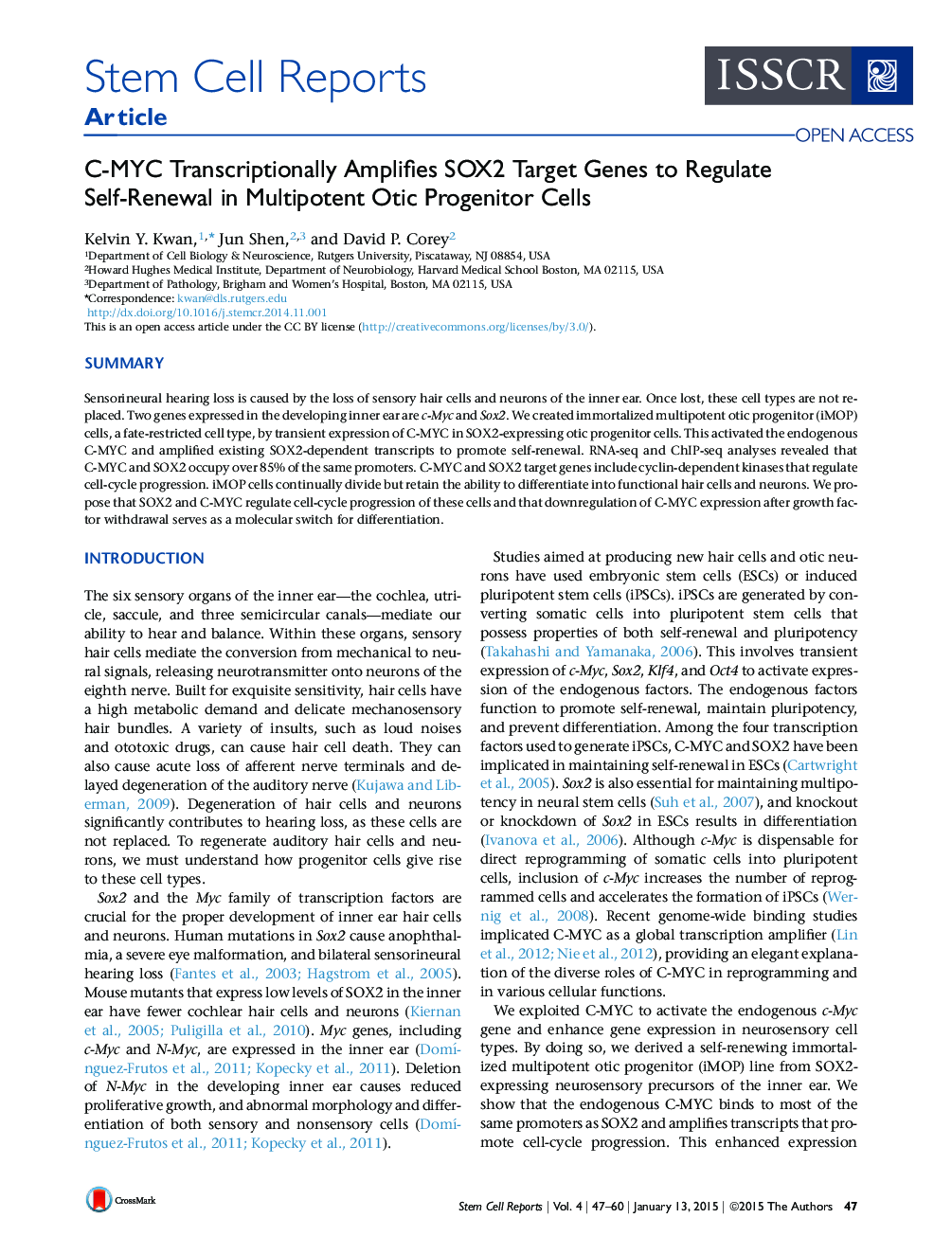| Article ID | Journal | Published Year | Pages | File Type |
|---|---|---|---|---|
| 2093645 | Stem Cell Reports | 2015 | 14 Pages |
•A single factor, C-MYC, induces self-renewal in SOX2-expressing otic progenitors•C-MYC transcriptionally amplifies SOX2 target genes•SOX2 modulates transcription of cell-cycle genes•Immortalized multipotent otic progenitors can differentiate into otic cell types
SummarySensorineural hearing loss is caused by the loss of sensory hair cells and neurons of the inner ear. Once lost, these cell types are not replaced. Two genes expressed in the developing inner ear are c-Myc and Sox2. We created immortalized multipotent otic progenitor (iMOP) cells, a fate-restricted cell type, by transient expression of C-MYC in SOX2-expressing otic progenitor cells. This activated the endogenous C-MYC and amplified existing SOX2-dependent transcripts to promote self-renewal. RNA-seq and ChIP-seq analyses revealed that C-MYC and SOX2 occupy over 85% of the same promoters. C-MYC and SOX2 target genes include cyclin-dependent kinases that regulate cell-cycle progression. iMOP cells continually divide but retain the ability to differentiate into functional hair cells and neurons. We propose that SOX2 and C-MYC regulate cell-cycle progression of these cells and that downregulation of C-MYC expression after growth factor withdrawal serves as a molecular switch for differentiation.
Graphical AbstractFigure optionsDownload full-size imageDownload as PowerPoint slide
